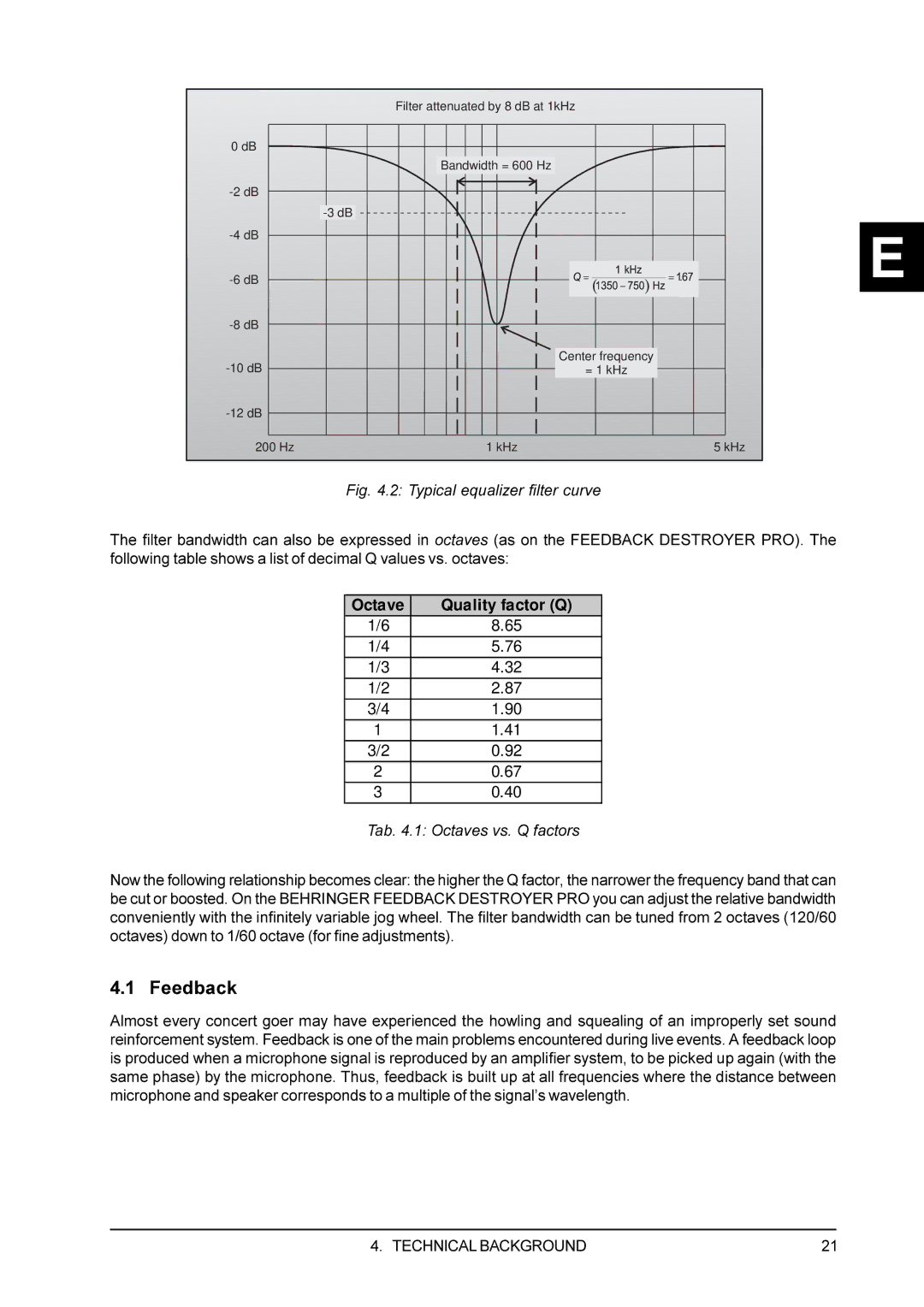
Filter attenuated by 8 dB at 1kHz
0 dB
Bandwidth = 600 Hz
|
| |
|
| |
|
| |
|
| |
|
| |
| Center frequency | |
| = 1 kHz | |
|
| |
200 Hz | 1 kHz | 5 kHz |
Fig. 4.2: Typical equalizer filter curve
The filter bandwidth can also be expressed in octaves (as on the FEEDBACK DESTROYER PRO). The following table shows a list of decimal Q values vs. octaves:
Octave | Quality factor (Q) |
1/6 | 8.65 |
|
|
1/4 | 5.76 |
1/3 | 4.32 |
1/2 | 2.87 |
3/4 | 1.90 |
1 | 1.41 |
3/2 | 0.92 |
2 | 0.67 |
3 | 0.40 |
|
|
Tab. 4.1: Octaves vs. Q factors
Now the following relationship becomes clear: the higher the Q factor, the narrower the frequency band that can be cut or boosted. On the BEHRINGER FEEDBACK DESTROYER PRO you can adjust the relative bandwidth conveniently with the infinitely variable jog wheel. The filter bandwidth can be tuned from 2 octaves (120/60 octaves) down to 1/60 octave (for fine adjustments).
4.1 Feedback
Almost every concert goer may have experienced the howling and squealing of an improperly set sound reinforcement system. Feedback is one of the main problems encountered during live events. A feedback loop is produced when a microphone signal is reproduced by an amplifier system, to be picked up again (with the same phase) by the microphone. Thus, feedback is built up at all frequencies where the distance between microphone and speaker corresponds to a multiple of the signal’s wavelength.
E
4. TECHNICAL BACKGROUND | 21 |
